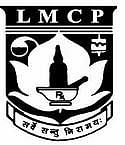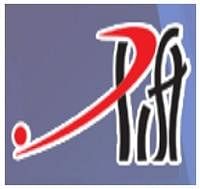MBA in Design Management Syllabus and Subjects

MBA in Design Management curriculum includes subjects such as project management, foundation to design, entrepreneurship development, etc., among others, which aid in providing advanced knowledge and understanding of current trends.
Semester Wise MBA Design Management Syllabus
MBA Design Management syllabus covers all the subjects that are necessary to understand the course and will teach students to understand concepts of design and its application in different fields. MBA in Design Management course covers a wide range of topics and are divided into four semesters.
The semester-by-semester MBA in Design Management subject list is listed below:
MBA in Design Management First Year Syllabus
The table below lists the first-year subjects bifurcated into the first and second semesters of MBA in Design Management courses:
|
Semester I |
Semester II |
|
Managerial economics |
Accounting for managers |
|
Communication skills and report writing |
Building materials and elements |
|
Foundation to design basic drawing |
CAD |
|
Customer Relationship Management |
Computer applications in management |
|
Management organizational behaviour |
Management Information Systems |
MBA in Design Management Second Year Syllabus
The table below lists the second-year subjects bifurcated into the third and fourth semesters of MBA in Design Management courses:
|
Semester III |
Semester IV |
|
Franchise Management and Operations |
Project management |
|
Estimation costing |
Fashion Retailing and Visual Merchandising |
|
Business laws |
International Business |
|
Research Methodology |
Strategic Management and Business Policy |
|
Lifestyle Space Design Management |
Project work |
MBA in Design Management Subjects
Subjects for an MBA in design management span a variety of fields and are crucial for candidates to master throughout the course of two years. Core and elective topics are separated for the MBA in Design Management. The following is a list of topics for an MBA in design management.
MBA in Design Management Core Subjects
The following are the core MBA in Design Management subjects that all MBA in Design Management students must take:
- Managerial Economics
- Production and operation management
- Foundation to design
- Business communication
- Managerial Practice and Organizational behaviour
MBA in Design Management Elective Subjects
The following are the elective MBA in Design Management subjects that all MBA in Design Management students can take:
- Project Management
- Fashion Retailing and Visual Merchandising
- Mall Management
- International Business Management
MBA in Design Management Course Structure
MBA in Design Management is curated in such a manner that it helps students gain knowledge along with practical experience and enhance the required skill sets. The course is two years long and is divided into core and elective subjects in accordance. The MBA in Design Management course structure is broken out as follows:
- IV Semesters
- Core Courses
- Elective Courses
- Practicals
- Seminars
- Research Project
- Project Work
MBA in Design Management Teaching Methodology and Techniques
MBA in Design Management teaching methodologies and techniques is vital to have a thorough understanding of the course.To improve the effectiveness of training, MBA programs incorporate case studies, group projects, and other forms of action-based learning in addition to traditional lectures. The different teaching methodologies and approaches used in the MBA in Design Management program include the following:
- Practical /Project sessions
- Internship/Training
- Seminars
- Regular Lectures
- Group Discussions
MBA in Design Management Course Projects
MBA in Design Management courses consist of projects that are integral to the curriculum. The program focuses on a group or individual projects through which students' performance and understanding of the subject can be evaluated. The following are the most common MBA in Design Management projects:
- Project schedules and the effects of resource management techniques
- Study of dialogue in design management
- Design management in the retail industry
- The shift from Eco to Sustainable design
MBA in Design Management Course Books
The books for the MBA in Design Management provide students with a fundamental overview of the course as well as an in-depth study of their area of understanding. The following books serve as the reading materials for the MBA in Design Management:
|
Name of Book |
Author |
|
Design Management: The Essential Handbook |
David Hands |
|
Design Management: Managing Design Strategy, Process and Implementation |
Kathryn Best |
|
Business Process Design, Management and Improvement |
Willmann Terpening |
|
A Business Case – Thinking, Leading and Managing by Design |
Brigitte Borja de Mozota |





















